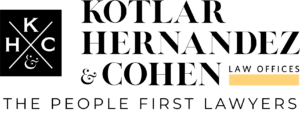Historically, the most common work-related fatalities in New Jersey and across the United States were most prominent in certain industries, such as administrative and waste management, construction, retail, and warehousing and transportation. The industries that have experienced the most non-fatal injuries in recent years have included health care, manufacturing, warehousing and transportation, and construction.
Approximately 100,000 workplace accidents are reported in New Jersey each year. In the past 20 years, about 3,000 people per year were hospitalized after a work accident. Nearly 2,000 job-related accidents each year cause injuries that result in death.
These figures pertain to private-sector and public-sector workers alike.
However, a recent release of injuries among public sector employees has shined some light on some of the dangers to workers, which provides employers an opportunity to address threats and make improvements to workplace safety protocols.
The list of 2021’s major workplace threats to safety for New Jersey’s public sector workers was released by the state’s Department of Labor and Workforce Development (NJDOL). The list, which was compiled by NJDOL’s Office of Public Employees Occupational Safety and Health (OPEOSH), contains the top 10 safety and health hazards that were reported throughout the year.
Top Workplace Hazards
The workplace hazards highlighted by OPEOSH’s roundup of New Jersey’s accident reporting among public-sector workers brought attention to the following:
Lack of exit routes or emergency plans: The revelations of this failing on the part of employers showed that many places of employment did not have an emergency evacuation plan in place or a way to keep track of which employees had been evacuated in an emergency. These recorded shortcomings also included hazards due to blocked exits or exits that were not clearly marked as such.
Electrical issues: The accounting of reported accidents included incidents of electrical shock, electrocution, and electrical fires because of circuit overload, exposed wires or connections, and electrical conductors’ exposure to water.
Lack of hazardous energy controls: Accident reports in this area show that protocols were missing or overlooked when it came to disengaging or locking out power to heavy machinery. Some accidents were due to stored energy, such as air pressure in an air compressor, not being cleared before beginning maintenance work.
Lack of machine guards: Machines with sharp or moving parts should include guards to protect workers from injury. Many injuries could be prevented with these simple solutions that include shields and other physical barriers or devices that offer protection from cuts, entanglement injuries, or flying debris.
Walking hazards: Slipping on treacherous terrain or tripping over objects causes a great number of preventable workplace injuries. From holes in walking surfaces to missing guardrails on stairs or elevated platforms, slipping and tripping dangers abound in workplaces.
Improper storage: Supplies, materials, or tools must be stored with safety in mind. Stacking boxes or objects haphazardly can create an accident scenario. In some instances, workers must receive proper training to avoid injury while retrieving stored items, such as when the job requires the operation of a forklift.
Insufficient hazardous-substance communication: When workers are in the vicinity of toxic materials, specific safety measures should be in place and communication procedures must be used to ensure everyone’s safety. All workers should be made aware of the presence of hazardous substances, and workers should be provided with proper training and personal protective equipment to stay safe while working with dangerous materials. Training should also include accident protocols.
Fire prevention failings: The improper storage of flammable or combustible materials is a problem that causes workplace accidents. Employers must establish a plan to ensure proper storage to prevent fires or explosions caused by these materials.
Airflow in confined spaces: Dangerous exposures to toxic gases or other breathable contaminants can cause negative health outcomes in workers. When businesses are issued a permit to operate, these concerns should be considered. However, lack of proper permits often leads to dangers that could have been addressed with air-quality monitoring and mitigation efforts.
Firefighting hazards: The final item on OPEOSH’s list applies specifically to the work of firefighters. It is clear that smoke inhalation and burns are job hazards for firefighters, but certain noncompliance issues create additional work-related dangers for these public servants. Regulations call for specific protections regarding protective gear, training and safety protocols, and duties and services performed as part of the job.
Although the OPEOSH report focused on the public sector, some of these same safety concerns were associated with the top workplace accident causes in New Jersey’s private sector as well, such as exposures to hazardous materials, falling objects, slip and fall incidents, as well as other physical hazards such as being electrocuted or hurt by work equipment.
Other Work Hazards
Some work hazards that are prevalent in workplaces throughout the state were not present on the list above. These include:
Overexertion: Injuries caused by overexertion include those that happen to someone when they lift, push, pull, or otherwise attempt to use physical force on something that may be too heavy for them.
Repetitive strain: Like overexertion, repetitive strain injuries result from pushing the body too far. In this case, repeated motions that are part of frequent or recurring job tasks cause injury, such as carpal tunnel syndrome.
Being struck: Workers are at risk of being struck by objects or equipment on the job. This includes falling objects as well as being hit by work vehicles such as forklifts or cranes. Trucking and driving accidents are also a problem for workers whose job includes transportation or working near traffic.
New Jersey Workers’ Compensation Lawyers at Kotlar, Hernandez & Cohen, LLC Support Injured Workers’ Rights
If you were hurt at work, you should be able to collect benefits from your employers’ Workers’ Compensation insurance, including medical care and lost income. The New Jersey Workers’ Compensation lawyers at Kotlar, Hernandez & Cohen, LLC can help you file for these benefits, or fight on your behalf if they are being denied. Call us at 856-751-7676 or contact us online for a free consultation. Our offices are in Mount Laurel, Cherry Hill, Trenton, and Vineland, New Jersey; and Trevose, Pennsylvania. We serve clients throughout New Jersey and Pennsylvania.


